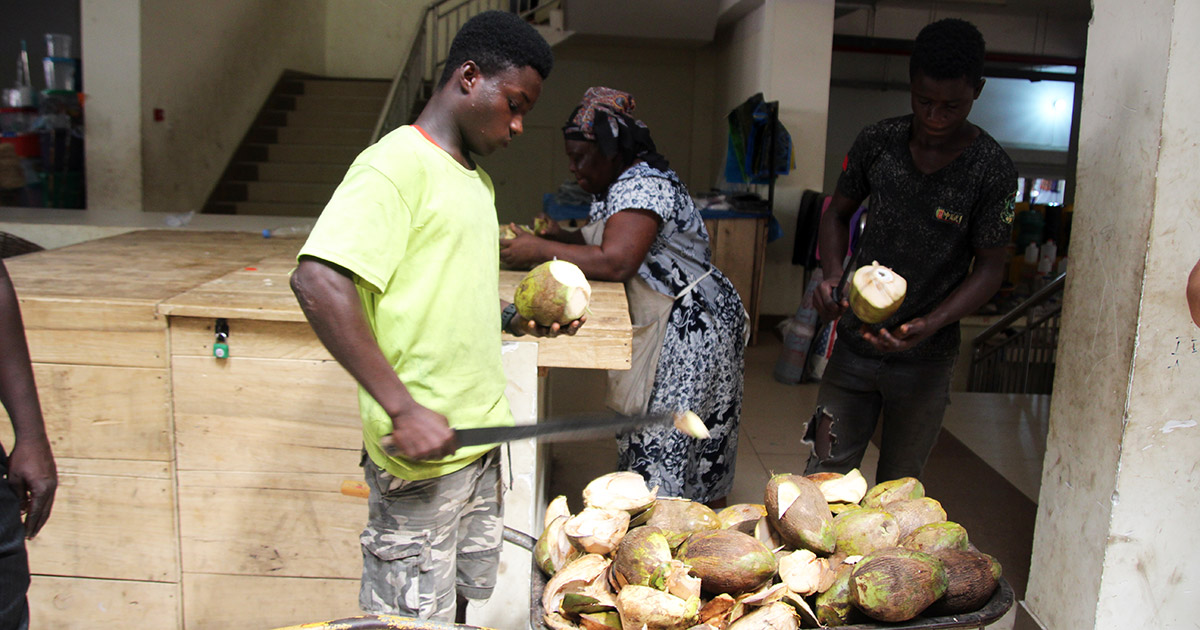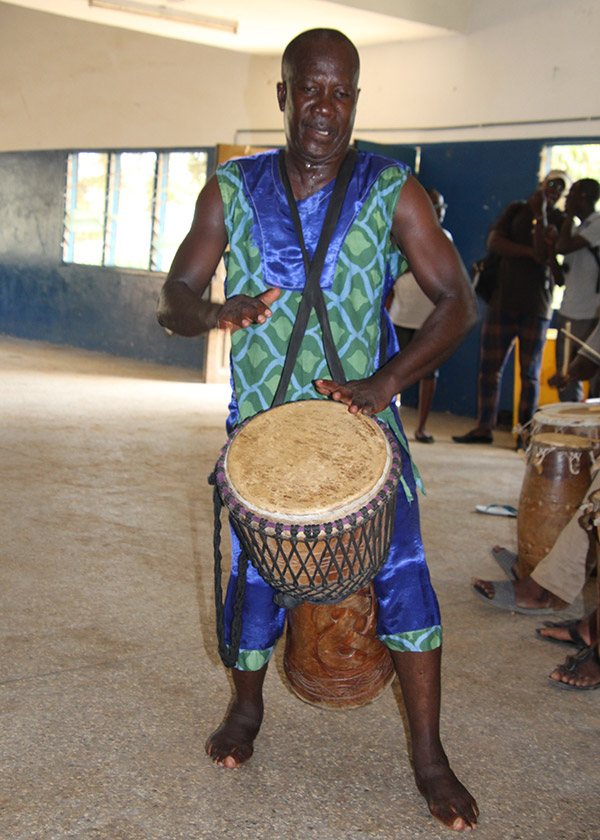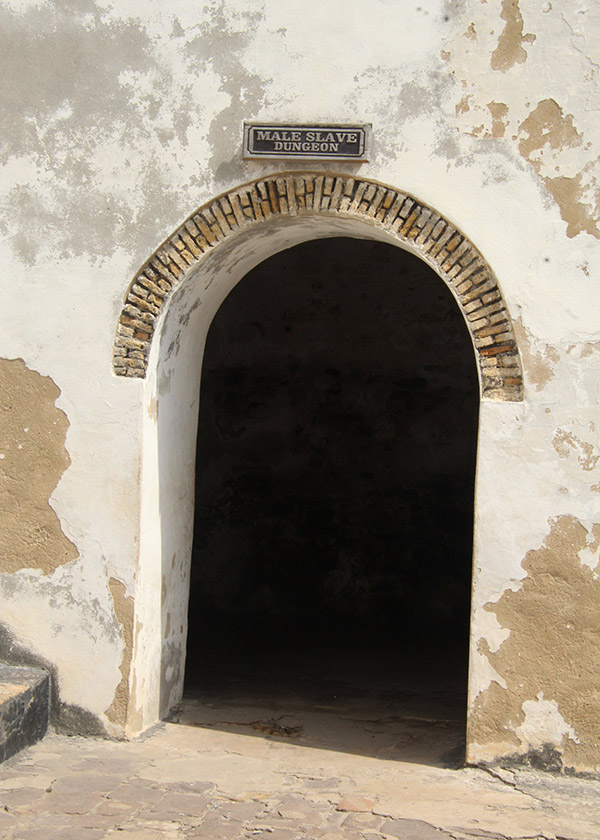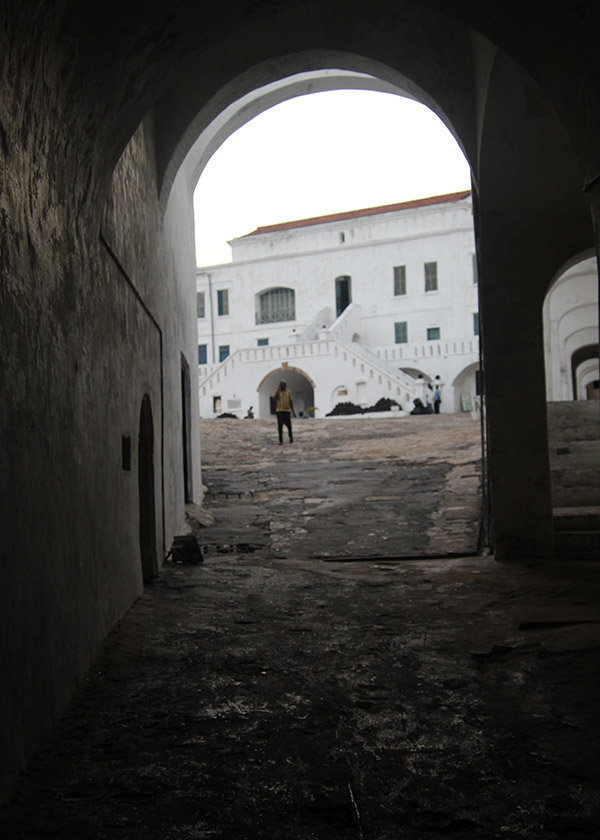Trip Report: Alternative Winter Break in Ghana
By Judith Mallory
The Tickle College of Engineering sponsored its Alternative Winter Break to Cape Coast, Ghana (formerly known as the Gold Coast), from December 14 through December 23, 2019. The trip marked the first trip to the African continent for Global Initiatives. The 26th trip for the Global Initiatives Program had ten participants: mechanical engineering majors Christopher Cannon (junior), Natalie Holt (sophomore), and Kiel Russell (senior); industrial engineering majors Savannah Davidson (sophomore) and Carmen Hall (Junior); senior materials science engineering major Ian Greeley; chemical engineering majors Naydia Futrell-Peoples (junior) and Kelsey Uselton (sophomore); civil engineering sophomore Meredith King; and environmental and soil sciences sophomore, Kaden Uselton. Sarah Jacob, senior electrical engineering major, served as student co-leader. Kaya Responsible Travel of the United Kingdom served as third-party provider, in partnership with Pro Aid Africa.
» Read Meredith King’s student trip report.
» Read Carmen Hall’s student trip report.
» Read Christopher Cannon’s student trip report.
» Read Naydia Futrell-Peoples’ student trip report.
» Read Ian Greeley’s student trip report.
» Read Kelsey Uselton’s student trip report.
» Read Kaden Uselton’s student trip report.
» Read Savannah Davidson’s student trip report.
After an overnight flight, the group landed in Ghana’s only international airport, Accra’s Kotoka International Airport. Originally a military airport, it was used by the British Royal Air Force during World War II. After the war, it was turned over to civilian authorities, who named the airport in honor of General Emmanuel Kwasi Kotoka (1926–1967) a member of the National Liberation Council. Interestingly, there is still controversy over the renaming of the facility, with many arguing that since the airport was actually built by President Kwame Nkrumah, against whose government Kotoka led the charge to overthrow, it should bear his name instead of that of Kotoka.
After about three hours by car, the travelers arrived at their destination for the week in Cape Coast, the capital of Cape Coast Metropolitan District and Central Region of south Ghana. Cape Coast is situated on its south to the Gulf of Guinea, with a population of around 170,000. Former US First Lady Michelle Obama considers it her ancestral home. Although the official language of Ghana is English, the native language of the people of Cape Coast is Fante.
From the 16th century until Ghanaian independence from Great Britain in 1957, the city and fishing port changed hands between the British, the Portuguese, the Swedish, the Danish and the Dutch, with the British being the dominant presence along the coast during this period. They used Cape Coast as their headquarters for trade. Traded items on the African leg of the route included honey, gold, and human slaves. Since trade was such an important motivator to the various powers of the day, many fortresses and settlements sprung up along the coast. Traders hailing from different nations of Europe built trading lodges, forts, and castles in this area. Sadly, the acquisition of the area’s resources by foreign entities became increasingly detrimental to the inhabitants of Cape Coast.
Cape Coast is perhaps best known for being a waystation in history’s largest and darkest forced human migration. The port at Cape Coast was where many slaves were held prior to their journey on the Middle Passage. It is also known as the main African point on the Triangular Trade Route. It is estimated that as many as 12 million individuals were sold, kidnapped, or traded during the transatlantic slave trade. About 1/3 of these died somewhere in the process.
About 72% of Ghanaians identify as Christian, including Pentecostal/Charismatic, Protestant, and Roman Catholic sects. Around 18% identify as Muslim, with the remainder either adhering to traditional, indigenous African religious practices or none at all. Religious tolerance is high in Ghana, with no major links between ethnicity and religion. Ghana has many spiritually based and syncretic houses of worship, which claim some adherence to Christianity. These beliefs combine with traditional African beliefs in magic and divination.
Evidence of Christian beliefs abounds in Cape Coast. Madonna and rosary decals are prevalent on cars, and images of Jesus are popular. Many businesses are named according to a Christian theme, including “Praise the Lord Hardware Store,” “Sacred Blood Barber Shop,” “Jesus Saves Food Market,” “Nothing but Christ Electric Supply,” and so forth. Interestingly, images of Jesus are consistently that of a Caucasian male.
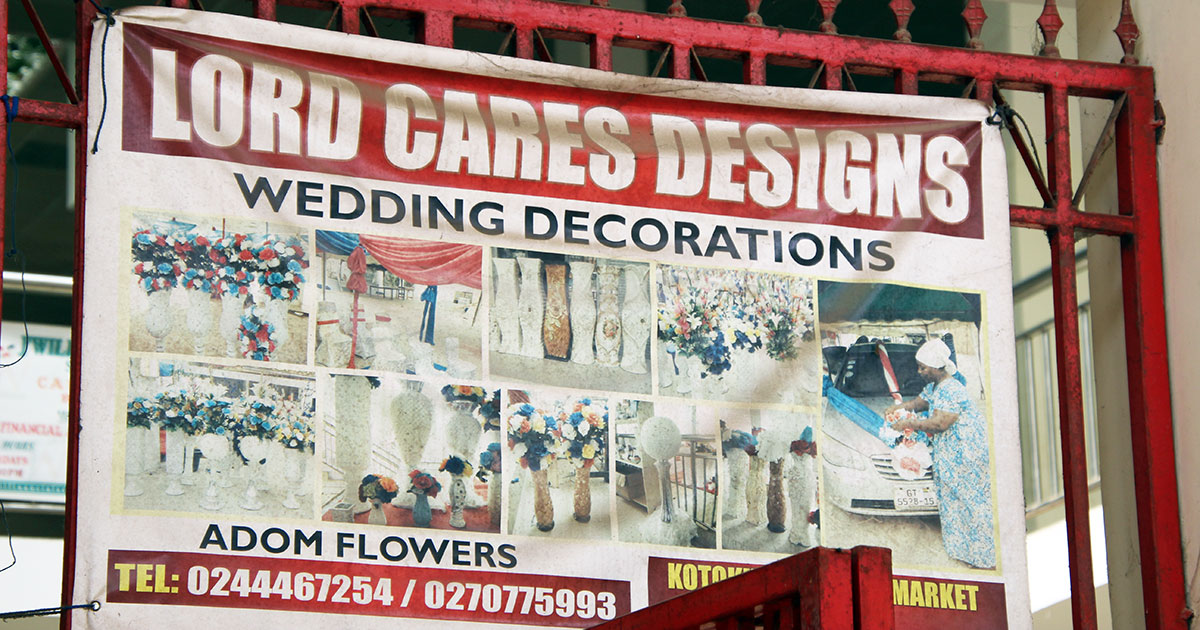
The group of travelers stayed in a “guesthouse” operated by a former nurse named Anastasia, who provided traditional, homemade meals for everyone. Typical Ghanaian dishes they got to experience included Peanut Soup (also called Groundnut Soup), Red red (black-eyed peas, palm oil, and plantain), Waakye (rice and beans), and Kelewele (spicy fried plantain.) Outside of the guest house, fish was a popular menu item due to the location of the town on the Pacific Ocean. Fish is normally not filleted, and is served with skin, fins and eyes intact.
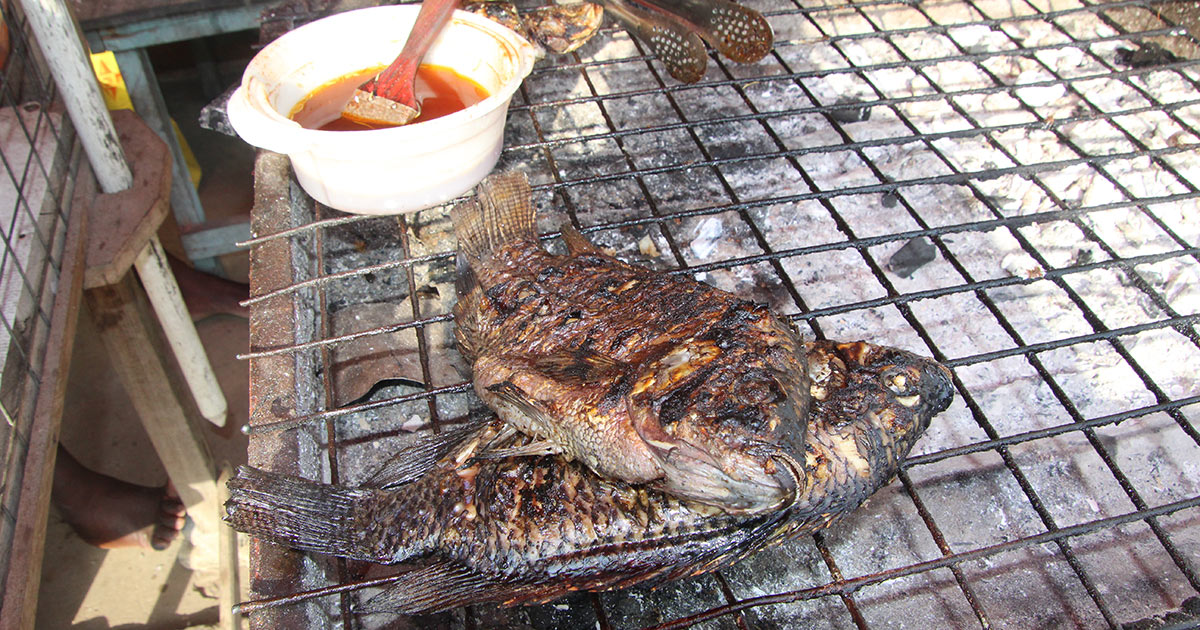
After settling in, the agenda for the week began with visits to a vocational high school and an engineering university. Hands on experience was emphasized in the curricula of both. Students at both places welcomed visitors and the chance to show off equipment and very clean lab space. One of the entities supported by Pro Aid Africa is the local fashion institute. A vocational school which teaches pattern making and clothing construction, it had both males and females as students. The TCE visitors each got measured for garments. Right down the street was the fabric seller’s; several of the students from the institute accompanied the TCE group in order to assist in selection of traditional African fabrics.
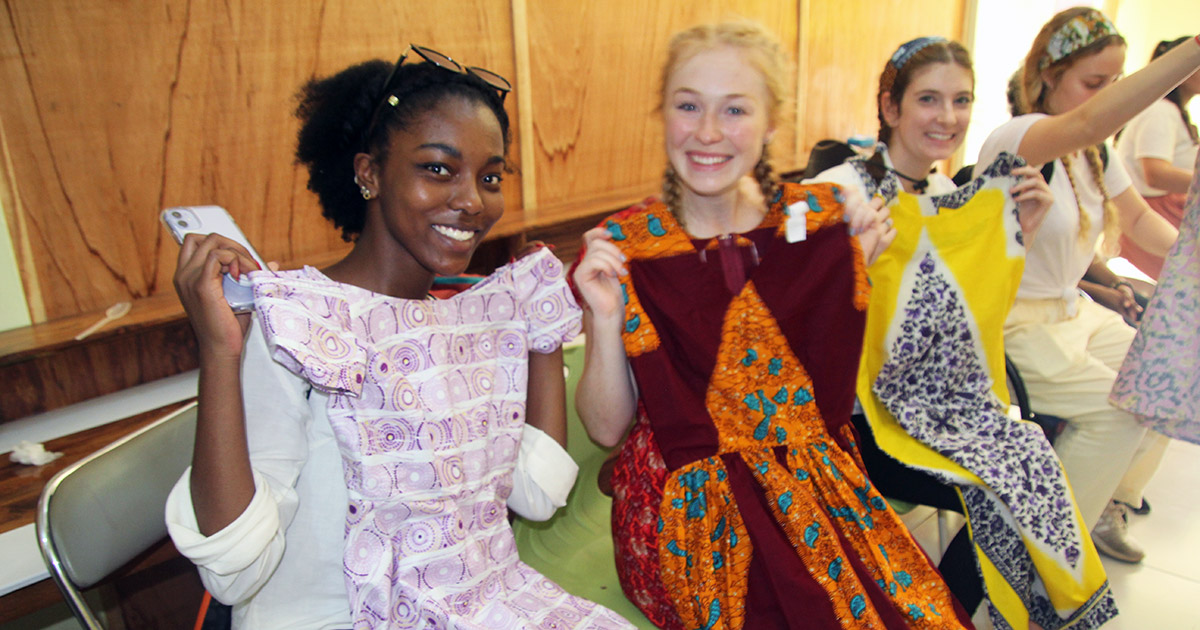
The next day, the physical portion of the service project began in earnest, with construction of a block wall at the vocational school. Students at the school pitched in, so many people were involved. Concrete was mixed on the ground and transported in a large metal pot, carried on the head of the transporter. The afternoon’s activity was a bead-stringing class, using beads the colors of the Ghanaian flag: yellow, black, and red.
The service project continued the following day at a different location. A different vocational school in a somewhat more rural location was under construction. The area around the school building needed some clearing, and initial steps had been taken to install a walkway. Inside the shell of a cinder block building under roof were the future classrooms. This is where the concrete was mixed. Outside, about 100 yards away was a large pile of gravel. The gravel was needed at the concrete mixing site, necessitating its transport there, again, in large metal pots. Everyone took turns trying to balance the pots upon their heads. TCE visitors worked alongside villagers to mix and transport the concrete. The work was physical, labor-intensive, and repetitive, but resulted in the start of the new walkway for the school. Later in the afternoon, the group took a walk around the bustling city of Cape Coast on the way back to the fashion institute, this time for a calabash workshop. The art of calabash uses a bottle gourd plant, Lagenaria siceraria, also known as New Guinea Bean or Tasmania Bean. The vine is grown for its fruit, but when harvested in a mature state may be dried for use as a utensil or in crafts, such as bowls or ladles.
The TCE group got to visit a residential school for the deaf and blind. In Ghana, there is a superstition in some areas that having a child with either of these disabilities will bring bad fortune upon the family, so they are abandoned. In addition to living and studying at the school and taking care of the property, the students have an impressive drum and dance corps. The drummers are blind, and the dancers are deaf. Somehow, they manage to perform together in impressive fashion. They taught the visitors a choreographed dance and joined them.
The next day was devoted to cultural and historic pursuits. The group visited two UNESCO World Heritage Sites, those being historic slave forts. The first stop was to Elmina Castle, erected by the Portuguese in 1482 as Elmina Castle, or Castelo de São Jorge da Mina (St. George of the Mine Castle), as a trading post. It is the oldest Sub-Saharan European building in existence; it would later become one of the most important stops on the Transatlantic Slave route. Seized from the Portuguese in 1637 by the Dutch, the slave trade continued until 1814. Great Britain would eventually take possession of the fort in 1872.
Initially, the Portuguese did not want Elmina to engage directly in the slave trade, as they didn’t want to disrupt the established gold mining and trade routes with the wars necessary to capture and enslave free people. For this reason, they had slaves imported from other places, notably the Slave Coast of Benin and São Tomé. Elmina served as a depot where enslaved Africans were delivered from various kingdoms in West Africa, to be sold or traded for goods such as textiles and horses. Slaves were incarcerated here before exiting through the infamous “Door of no Return,” to be taken on small boats out to larger ships moored in deeper water. As many as 1,000 males and 500 females were held at a time, with no access to water or sanitation and little sunlight. A slave might spend up to three months at the castle before transport to the New World. In stark contrast, areas above ground in the castle featured extravagant chambers with views of the Atlantic Ocean. The castle confines also had a chapel in which officers, traders and their families could worship, alongside the harsh and unfathomable human suffering they were knowingly inflicting on the same grounds. Erected at the site is a plaque inscribed as follows: “In everlasting memory of the anguish of our ancestors, may those who died rest in peace, may those who return find their roots, may humanity never again perpetrate such injustice against humanity, we the living vow to uphold this.”
Nearby Elmina is the Cape Coast Castle; built in 1653 by the Swedish Africa Company, it was originally a timber and gold trading post. It was rebuilt by the British in the 18th century. Trade history helps explain the emergence of Cape Coast Castle into a slave fort. Various European nations were attracted to the gold dust found in Ghana, and many natives of the Cape Coast area used this to their advantage; in exchange for gold, mahogany, and their own people, from the Europeans they received clothing, blankets, sugar, silk, and other items. Cape Coast Castle was a market for these transactions. Once the slave trade increased, the Castle was altered to include large underground dungeons that could hold up to 1,000 slaves awaiting export. Business was competitive and led to control of the Castle changing hands many times. The dungeons were often the last memory of the African continent prior to their shipment to the New World. Visiting both sites was a solemn and moving experience.
The following day, the group took a nature walk in the Kakum National Park, a rainforest and home to endangered mammals. Native guides identified birds and various plant materials. The highlight of the visit was a trek across the canopy walkway, an arrangement of seven swinging bridges suspended 30 meters above ground, providing treetop views of the forest. The park featured an amazing gift shop, full of native crafts, jewelry, and garments for sale.
Sarah Jacob, student co-leader for the trip, contributed the following to the Ghana trip report: While the TCE students saw what life and education looked like in a more developed city like Cape Coast, they were able to gain a new perspective on life and education in Ghana by visiting the village where Patrick, one of the Pro-Aid in-country coordinators, grew up. The TCE students walked through the village where they saw a mix of homes that were made from clay and homes that were made using the concrete block and mortar method that they learned at the first site of the service project. Patrick pointed out the chief’s house, under construction. The TCE students were not able to meet the village chief, but they did meet two village elders. Patrick winked as he told students that meeting the elders was just as good as meeting the chief. Patrick also showed us the house where he grew up and introduced us to his grandmother and her cat. Patrick was proud to show the students his village, but his favorite part was showing the efforts to build and create the school in town, Bright Future Preparatory. Construction started on Bright Future Preparatory in 1997.
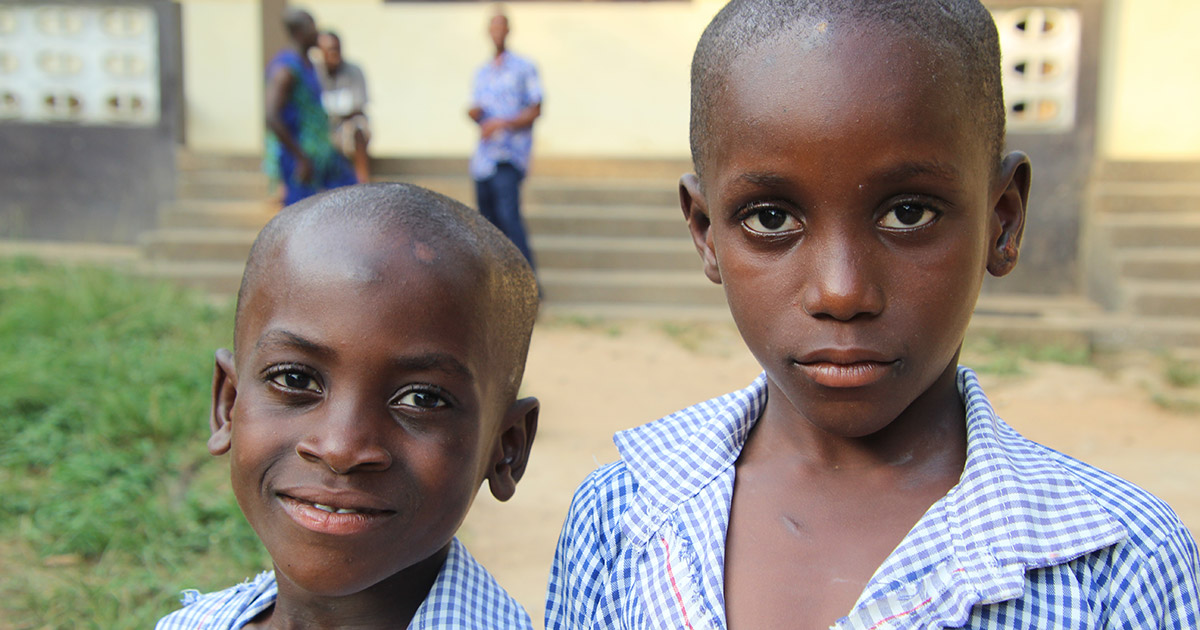
The school is currently functional, but the school leadership hopes to increase the space available for the junior secondary school. In Ghana, students go to primary school for six years, junior secondary school for three years, and senior secondary school for three years. The school has students ranging in age from three years old at the preschool, to students who are fifteen and finishing up junior secondary school. Senior secondary schools can be divided into general or vocational programs. Students can choose electives. These schools have more resources and teachers than the school at Bright Future Preparatory. Patrick said that currently, all senior secondary schools are free. This results in the national annual budget for education being around 25%. There is not enough space in schools to accommodate all of the students in the senior secondary high schools, so student attendance is staggered in two tracks where one group of students goes to school for two months, while the other group waits until it is their turn. It is also worth noting that a majority of the senior secondary schools in Ghana are boarding schools. While there are criticisms of this method, senior secondary school attendance has increased to 83% from 67% before the program was enacted.
Patrick told the TCE students that many students at the Bright Future Prep came from neighboring villages since the school was one of the best in the area. When the TCE students approached the bright pink school, they saw that the Bright Future Prep students were outside the classrooms waiting to greet us. The older Bright Future Prep students were dancing along to drumbeats played by some of the slightly younger students. The dancers were all wearing red Taylor Swift shirts. While watching the dancing, some of the TCE students noticed that the Bright Future Prep students had posters with the names of each of the visiting students’ names on display. After being greeted, the TCE students visited each classroom where students sang a song in each room. In one of the classrooms, TCE students returned the favor by singing and dancing the chicken dance. The motto of Bright Future Prep is “Education is Key.”
After lunch, the TCE visitors helped around the school by painting over where the paint was cracked on the walls and by helping to lay concrete at the back of the school. Some of the TCE students were able to interact with the Bright Future Prep students in the younger grades.
This experience really drove home the fact that Education is Key in Ghana. The country is trying to increase the availability and affordability of education in order to transform the country and increase global competitiveness.
